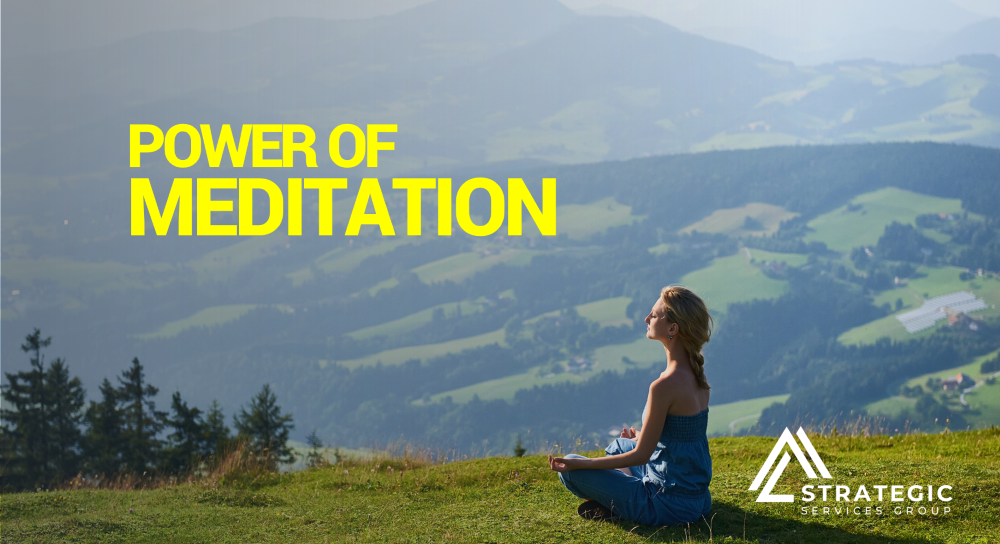Power of Meditation

In today’s fast-paced workplace, everyone is often juggling multiple priorities, tight deadlines, and constant change. The result? Rising stress, burnout, and disengagement that affect both individuals and organizations.
One simple yet powerful way to counterbalance this is through mindfulness and meditation. Practicing—even for just a few minutes a day—can reduce stress, improve focus, and strengthen overall well-being. For HR leaders and executives, supporting mindfulness is more than a perk—it’s a proactive strategy for building healthier, more resilient teams.
Research underscores its impact:
- Employees who practice mindfulness report 28% lower stress levels and 20% fewer burnout symptoms (American Psychological Association).
- Aetna’s mindfulness-at-work initiative saved the company an estimated $2,000 per employee annually in healthcare costs and gained an additional 62 minutes of productivity per worker each week.
- According to Deloitte, nearly 83% of employees say workplace stress affects their health and performance—making proactive well-being support essential.
This SSG Health+Wellness Insight features eight foundational steps you can share with employees as part of your wellness program.
CREATE A FAMILIAR SPACE. Meditation doesn’t require a studio or special setup. A quiet corner of the home, a breakroom, or even the space next to a desk can work. What’s most important is consistency. Practicing in the same place and at the same time each day helps the brain associate that space with calm and focus, making it easier to establish a daily routine.
SIT UP STRAIGHT. Posture matters. Sit upright but relaxed—balanced, not stiff. A cushion on the floor with crossed legs works well or simply sit in a chair with your feet grounded and your back supported. Imagine a string gently pulling the crown of your head upward. Good posture helps keep your focus sharp. This balance supports concentration and prevents the “slump” that leads to mental drift.
KEEP YOUR EYES OPEN. Instead of closing your eyes, which can invite wandering thoughts, try keeping them softly open. Rest your gaze gently a few feet in front of you, unfocused, to stay present in your environment.
NOTICE YOUR BREATH. Let your breath be your anchor. Tune into its natural rhythm and allow it to guide you back whenever your mind drifts. A helpful exercise is to count each exhale—“one,” then “two,” and so forth. When thoughts arise (as they inevitably do), gently guide attention back to “one.” This resets focus without judgment.
LET GO OF THOUGHTS. The goal is not to block thoughts but to release them. Much like clouds passing across the sky, thoughts can be acknowledged and then allowed to drift away. This practice fosters resilience and the ability to return to the present moment—an invaluable skill in high-pressure work environments.
FOCUS ON YOUR BODY. Physical tension often reflects emotional strain. Tight shoulders may signal stress, while a clenched jaw might indicate worry. By tuning into these signals, you can use breathwork to release tension and reconnect mind and body.
EMBRACE SILENCE. Silence creates space for clarity. External quiet invites your internal noise to settle too. Allow yourself to rest in that stillness—it’s often where the deepest calm can be found.
TAKE YOUR TIME. Mindfulness is a practice, not a performance. Starting with just a few minutes daily is enough to establish momentum. This isn’t about instant transformation, but about creating a life-long habit. There’s no rush, and progress is measured in consistency, not duration.
For help understanding and strategically managing your health and wellness initiatives, contact a SSG Advisor.

 Prev
Prev

